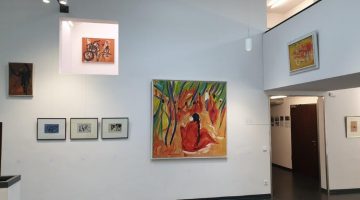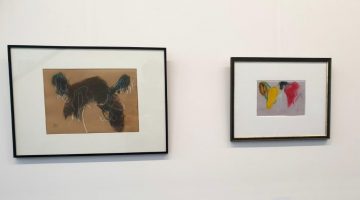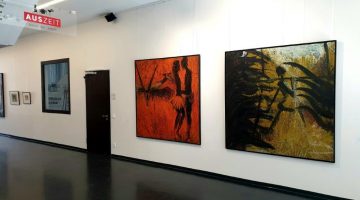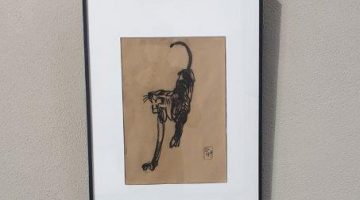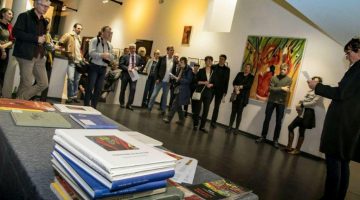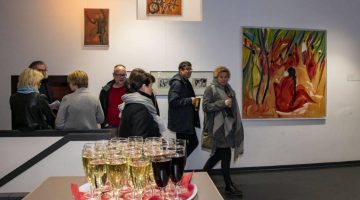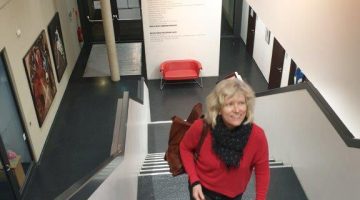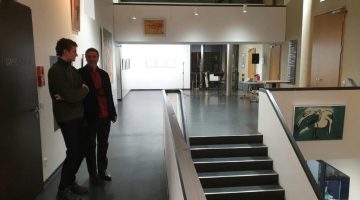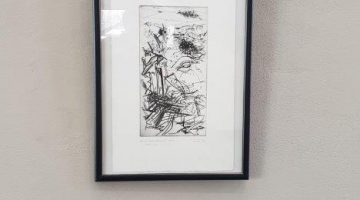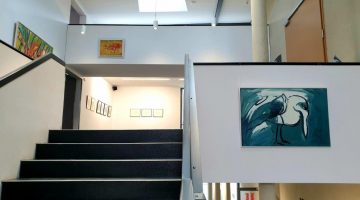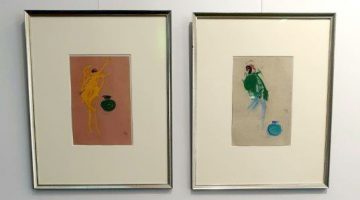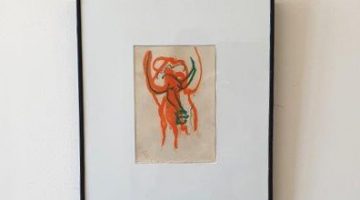Welcome to the virtual exhibition!
The originals can be found in the orphaned gallery. After the doors have been closed, you can take a look at the pictures here!
Kunstraum XVII, Hoyerswerda Exhibition MAPSA ROAD 14.3. – 12.5.2020

The Mapsa Road – Text by Torsten Schlüter
Mapsa Road, a small road in southwest India, connects the village of Anjuna with the lively district town of Mapusa, popularly known as Mapsa.
Along the route, gleaming white cathedrals are a reminder of the Portuguese’s former missionary zeal. Vasco da Gama landed on this coast when he discovered the sea route to India 500 years ago.
Again and again, villas from the colonial era emerge from the green in bright turquoise, ochre, white and blue. Artistic carvings adorn the windows and doors. The buildings are fronted by verandas supported by lavish columns. Wide steps lead from the verandas into overgrown gardens with ancient cashew and mango trees.
In some gardens, instead of colorful villas, there are blackened ruins, half submerged in the jungle and overgrown with tree roots.
There are small chapels or equally small Hindu temples at road junctions. Catholics and Hindus share the same faith.
The scenery changes. Half-ruined, shed-like dwellings made of sheet metal and palm straw now huddle on the roadside. Women with bundles of wood, water containers or bowls of sand on their heads pass by.
Psychedelic sounds emanate from a ruin. It is teeming with two-wheelers. Some gypsy women have laid out rugs on the floor. The women fire up their kerosene stoves. They offer omelettes and chai, fruit and cakes on their carpet islands.
The “mapsalas”, those short, steep bumps that force all rolling vehicles to slow down if they are not to catapult their occupants through the ceiling, repeatedly slow down the flow of traffic.
Nevertheless, Mapsa Road feels increasingly hectic.
After an ascending bend, the road becomes much louder and narrower. The air is also getting thinner. Suddenly you find yourself in the middle of the typical Indian traffic bustle. Poor dwellings, tiny grocer’s stores and workshops are now packed closely together. The heaps of garbage are smoking between the piles of scrap metal at the side of the road. My 500cc stew chugs royally through the hustle and bustle of thousands of two-wheelers, three-wheelers, cars, buses and trucks. Including all kinds of creatures. Exhaust fumes and burning garbage complement each other and form acrid mixtures that attack the mouth, nose and eyes. Breathing becomes more difficult. A scarf pulled over half the face should prevent worse. The honking and the swelling noise of the engines pound in your ears.
More and more road courses are flowing into Mapsa Road. The stream moves slower and slower and turns into a viscous heap. In the pile, it pushes, it jostles, it falters and yet it moves. No one can explain how. Is the same. At some point, the big goal, the Mapsa market, is reached. Now things are getting even tighter. The supreme discipline begins. Circling the market. Spotting a shoulder-wide parking space. Until another two-wheeler releases them at some point.
Then the work begins.



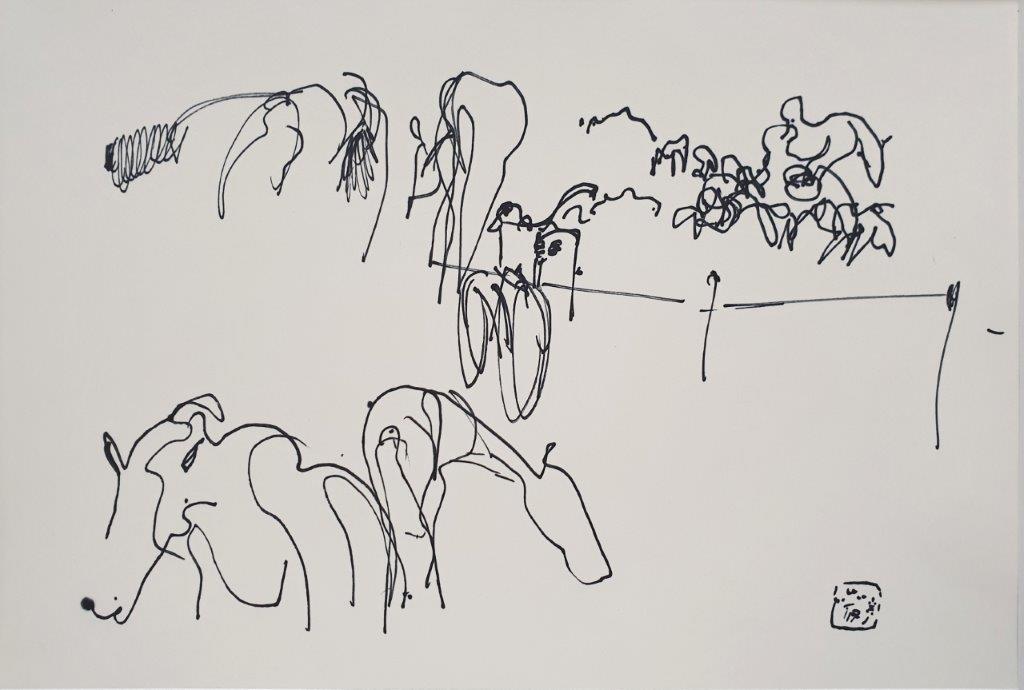
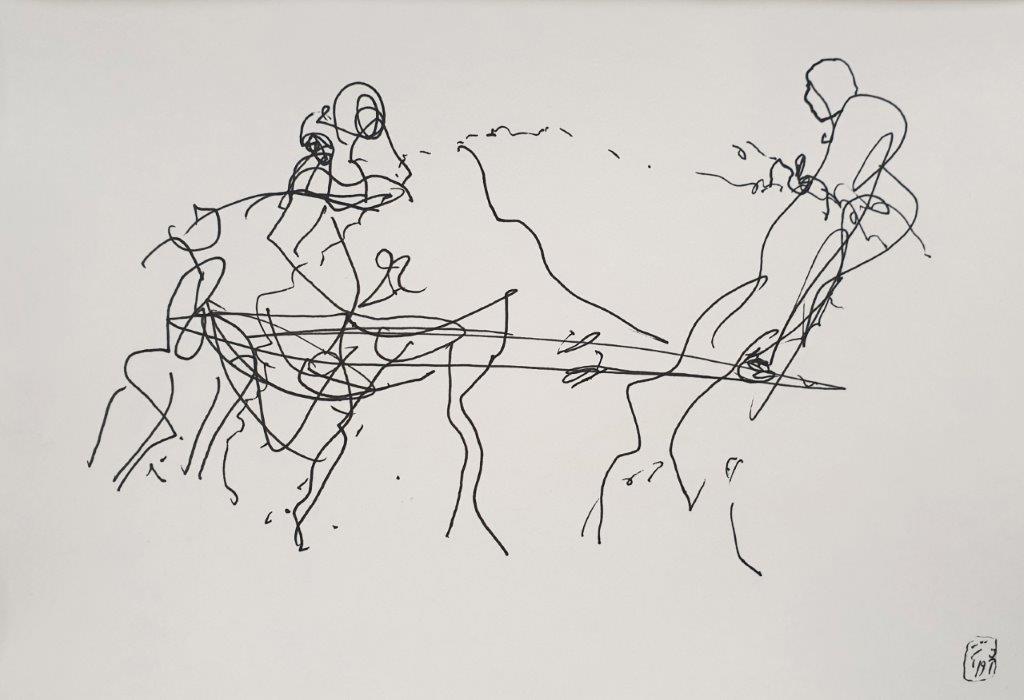
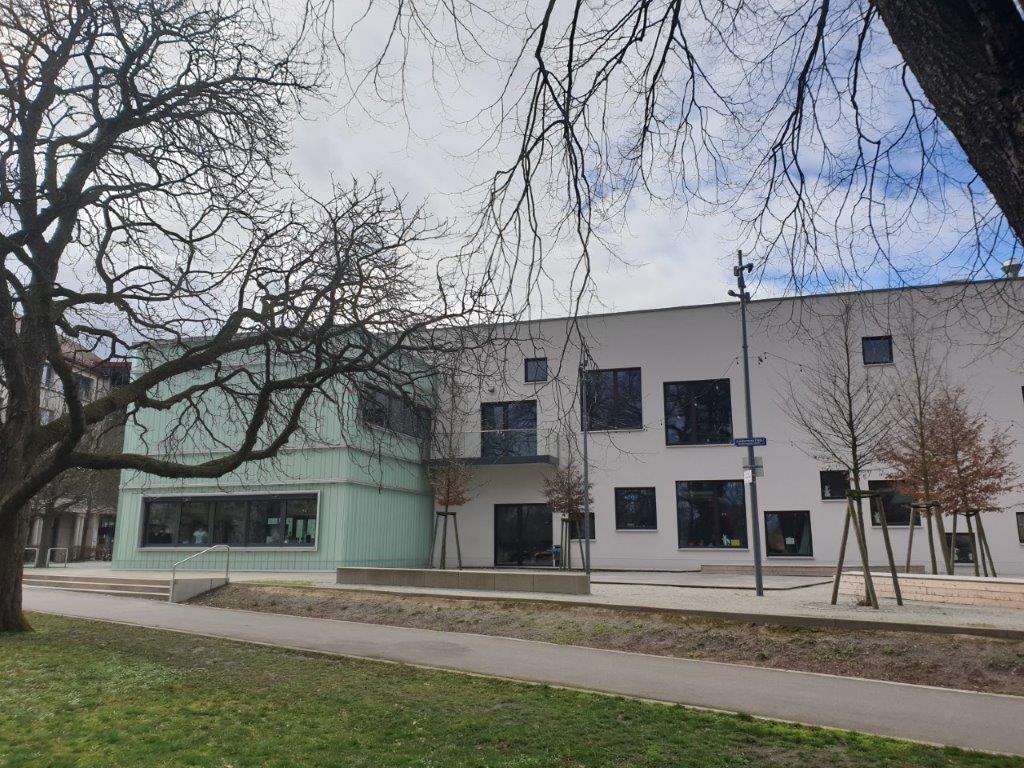
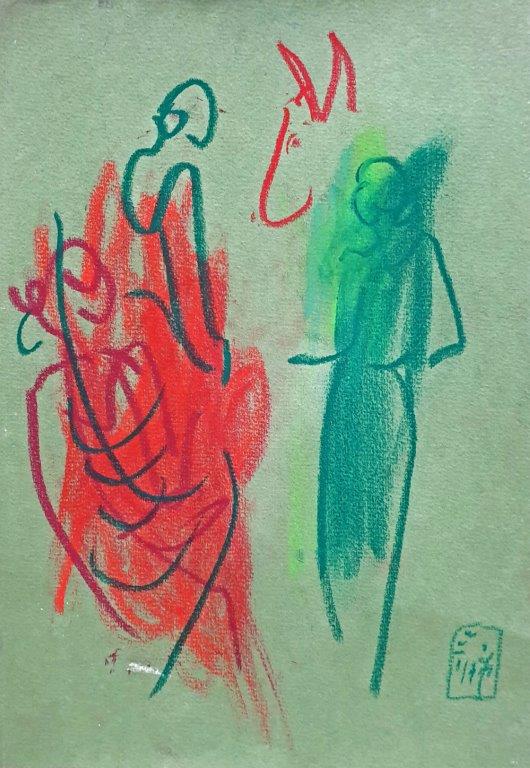
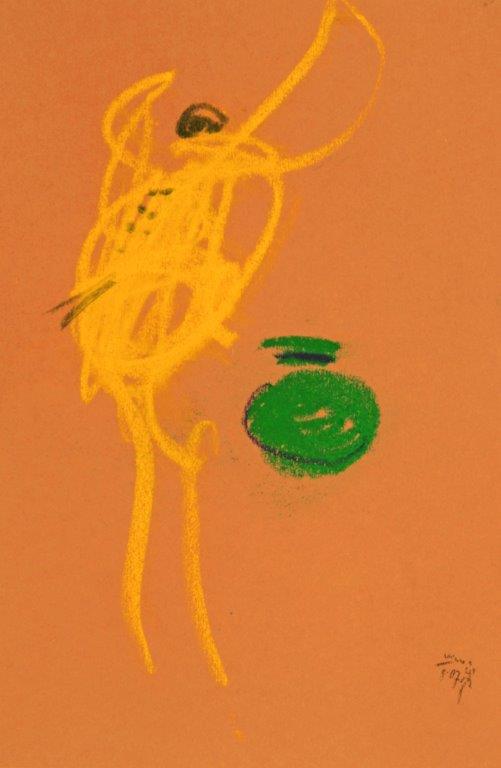
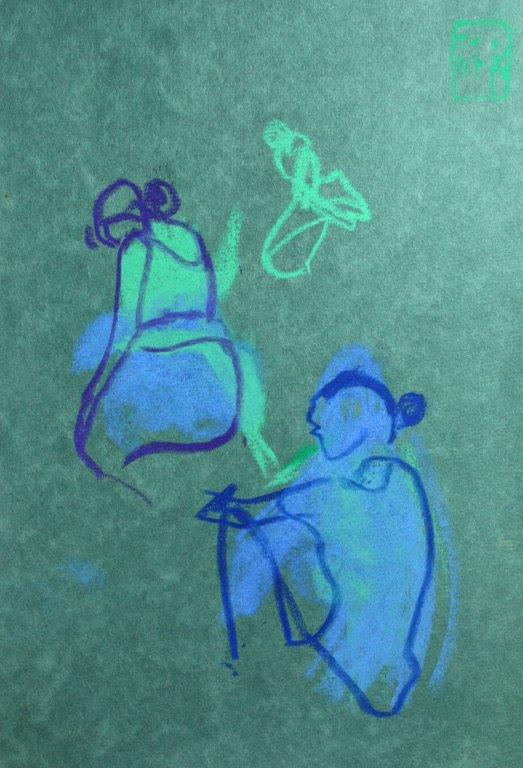
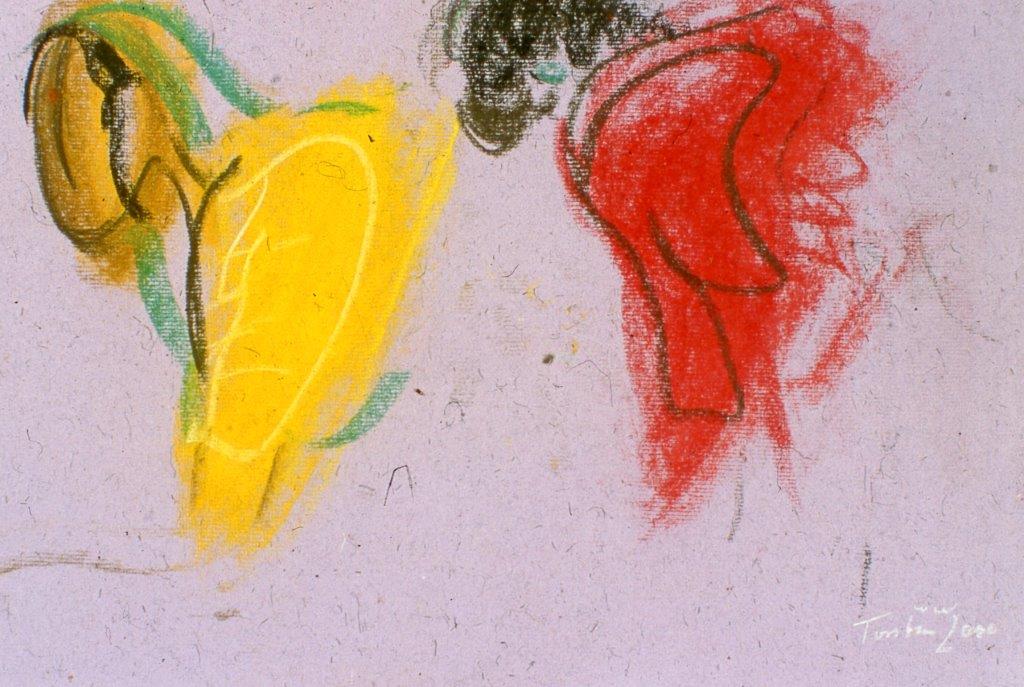

From the press release:
Mapsa Road” is a road in India and stands as a symbol for the constant but also the development in Schlüter’s art. He has been filling his sketchbooks in India for over 25 years and has created various series of works. One of the themes he repeatedly explores are his “well women” – the women drawing water from the well and the water carriers. With a confident stroke, Schlüter captures encounters on the roadside or at markets, in rice fields and also in the hustle and bustle of traffic. Meanwhile, the sacred cow eats his drawing paper and the stampeding water buffalo threatens to overturn the motorcycle. All of this is conveyed when looking at his works: Power and vitality, heat and dust, movement and rhythm.
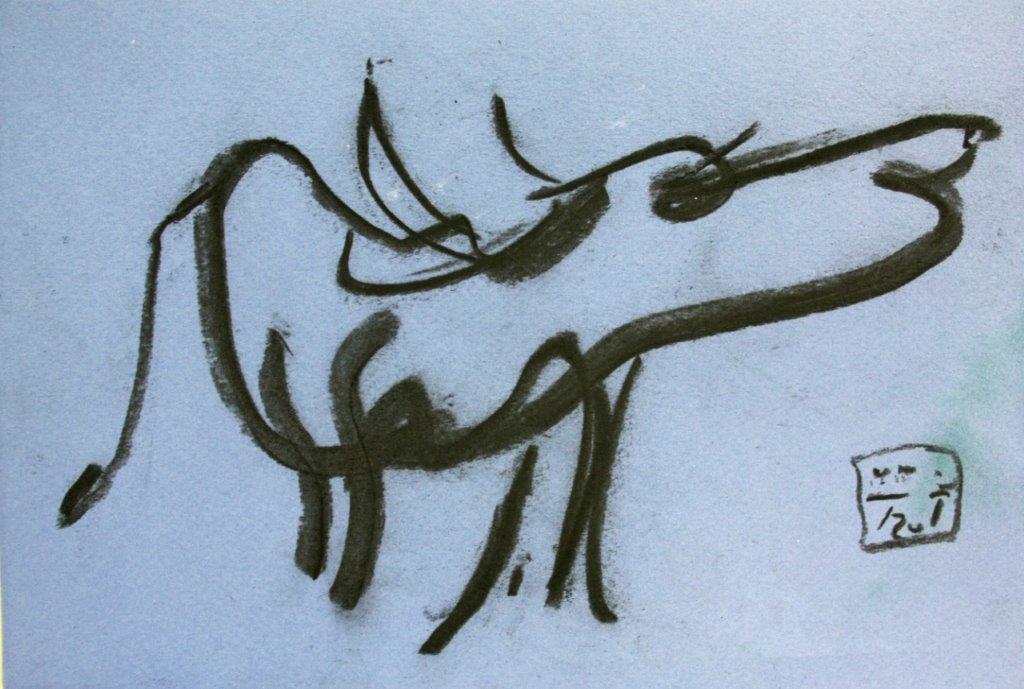


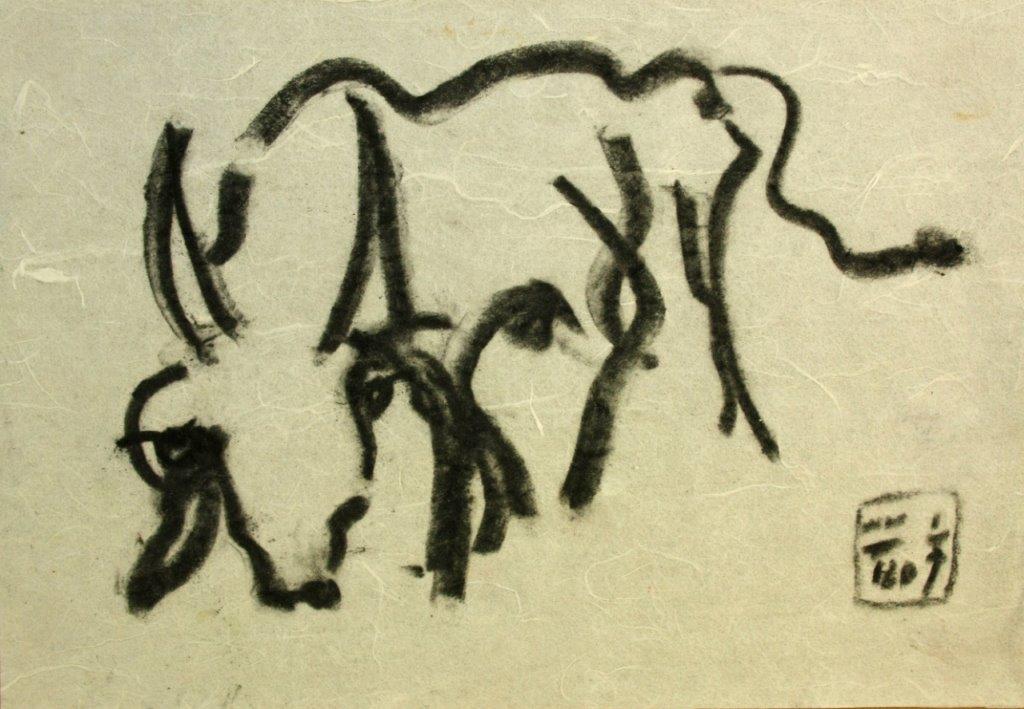
From the press release on the exhibition:
In addition to existing injustices and exclusion, India also embodies the meaningfulness of the moment for Torsten Schlüter. The artist seems to find a particularly creative, inspiring counterpart here like hardly anywhere else. The works from the India cycle thus also form a focal point of the exhibition. Schlüter’s work repeatedly deals with North-South issues. The Indian works are therefore juxtaposed with large-format canvases from the former colonial Namibia cycle “Tulipamwe” as well as drawings of Indonesian cockfights or sketches and etchings on the subject of “Manhattan canyons”. The exhibition comprises around 50 works, large-format canvases, pastels, drawings and etchings.
Many thanks to Michael Kruscha for the introduction on 13.3.20 and to Rolf von Nordenskjöld for the musical accompaniment.

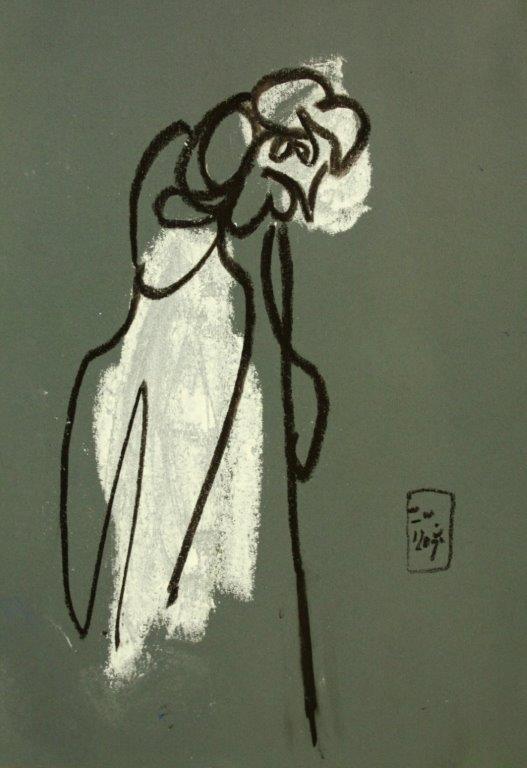
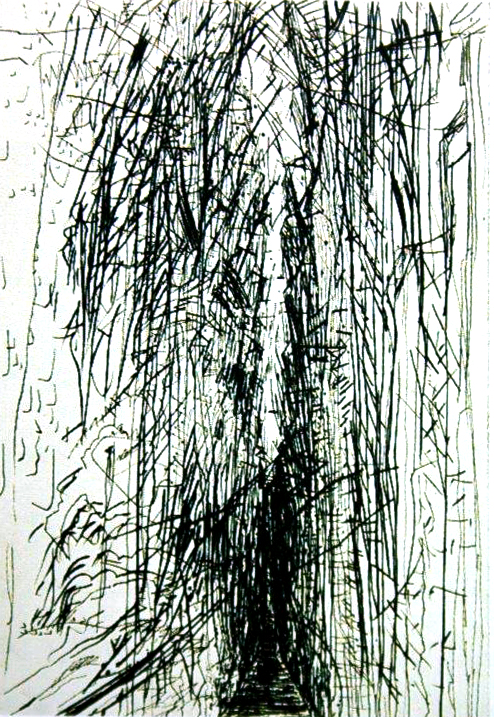
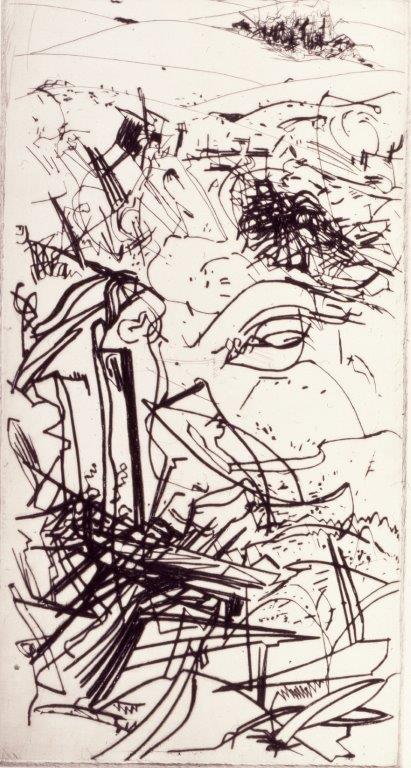
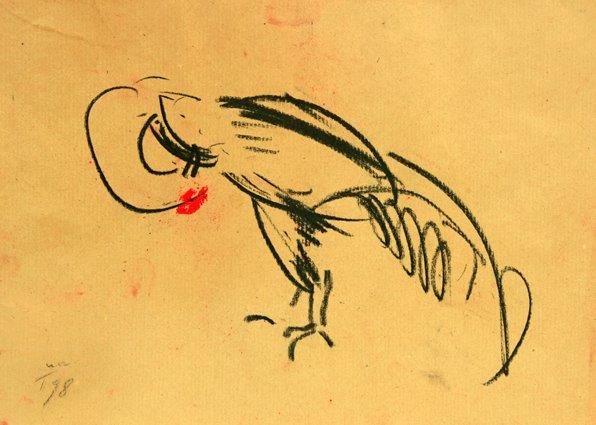
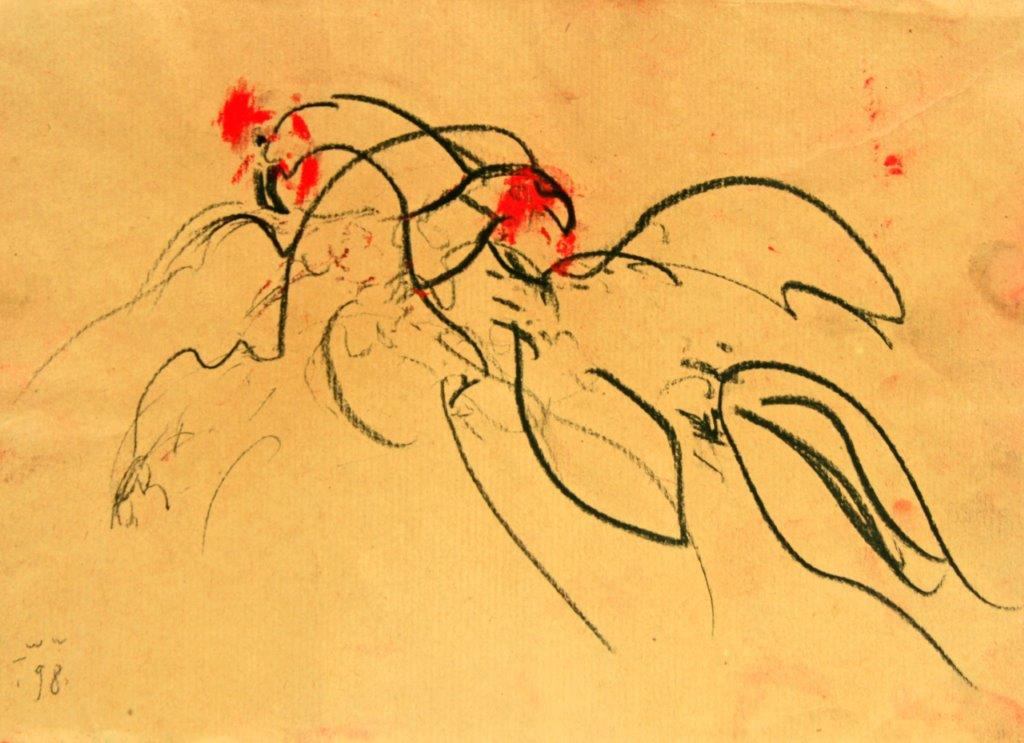
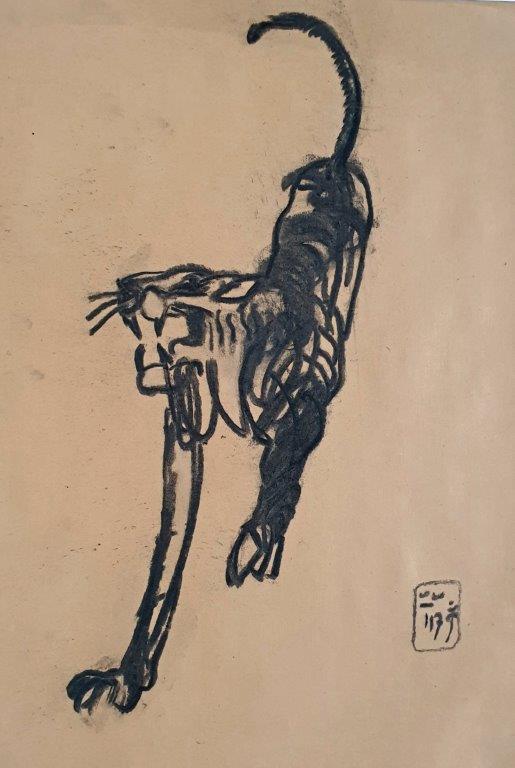

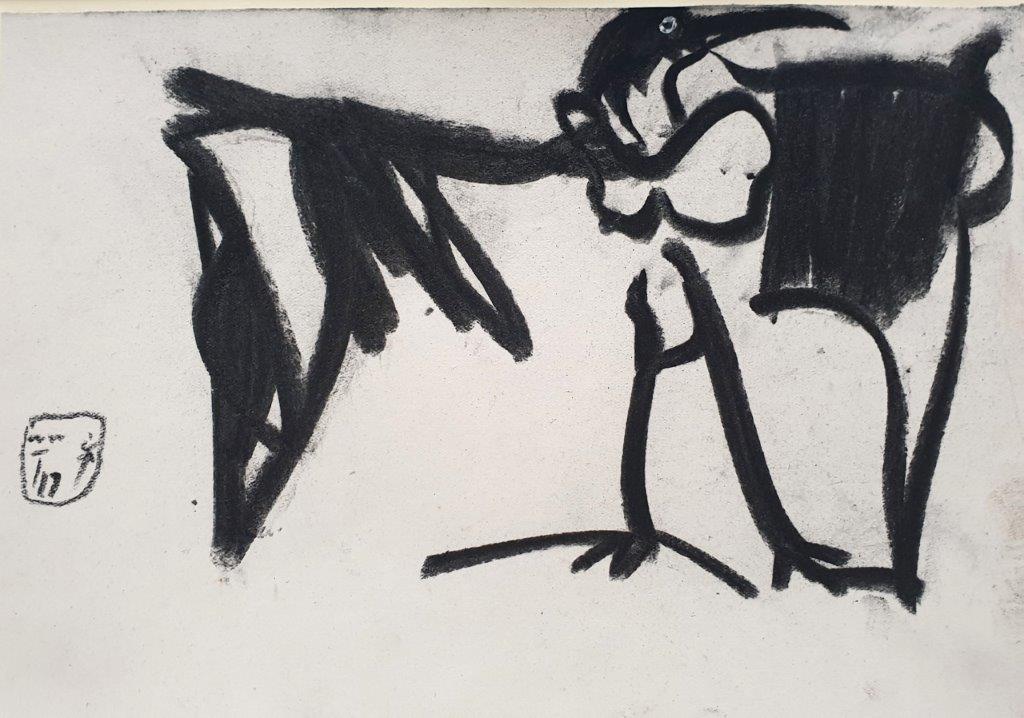




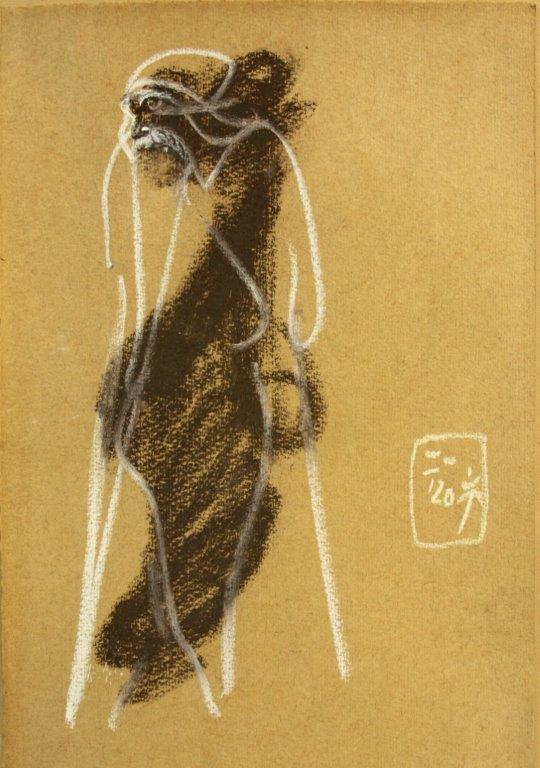
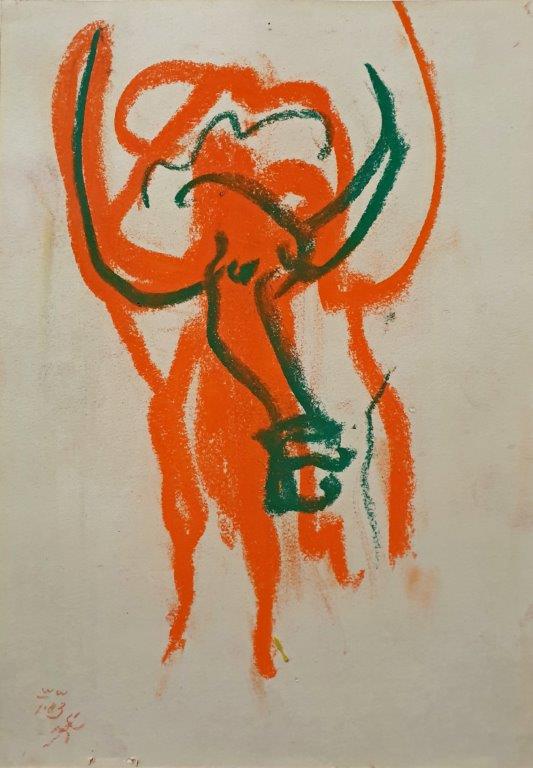
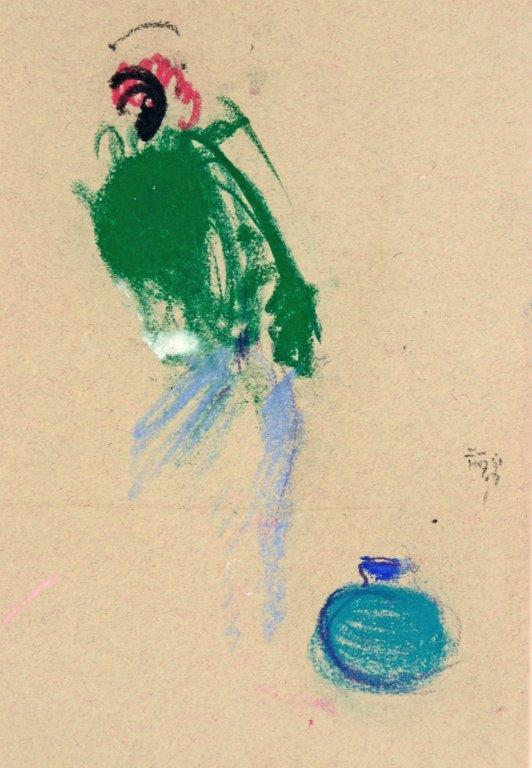
Goodbye!
